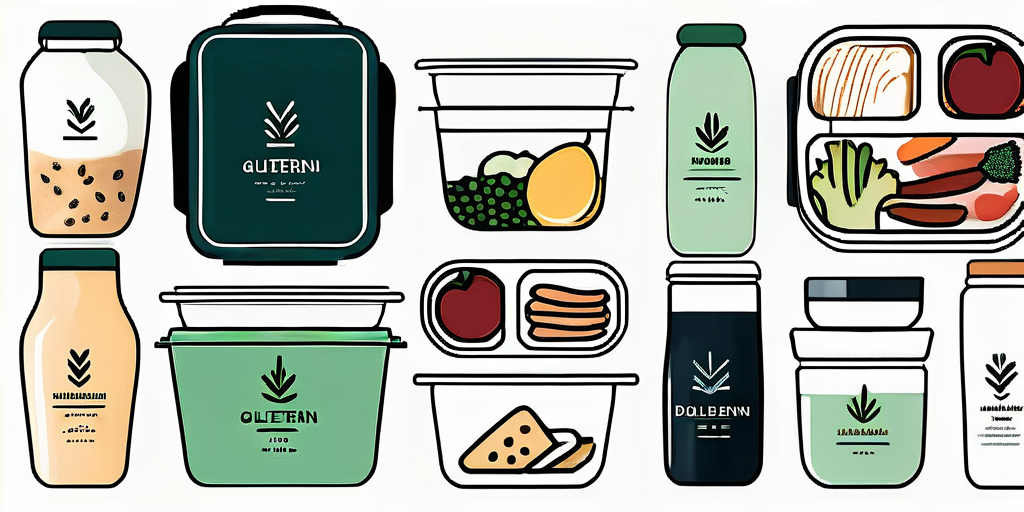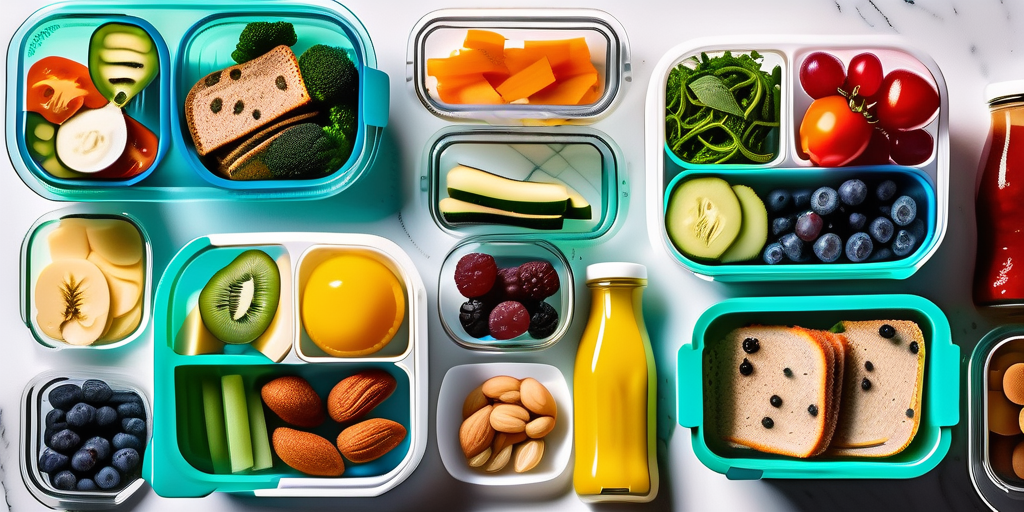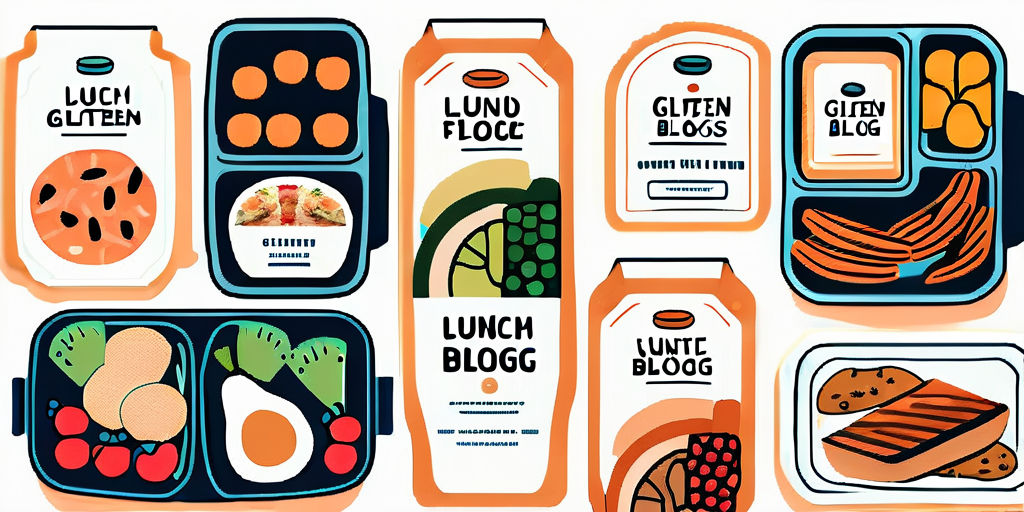|
|
|
|
|
Creation date: Jan 27, 2024 3:17am Last modified date: Jan 27, 2024 3:17am Last visit date: Nov 17, 2024 11:31pm
1 / 20 posts
Jan 27, 2024 ( 1 post ) 1/27/2024
3:17am
Kristie Vanhoy (kristievanhoy)
Living with dietary restrictions can pose challenges when it comes to packing your lunch. Whether you're dealing with food allergies, intolerances, or following a specific diet for health reasons, it's important to understand how to navigate these restrictions and ensure you're still getting a balanced and enjoyable meal. In this article, we'll explore some common types of dietary restrictions, the impact they can have on nutrition, as well as practical tips and creative ideas for planning and preparing meals that meet your specific needs. Understanding Dietary RestrictionsWhen it comes to dietary restrictions, there are numerous factors to consider. From gluten-free to dairy-free and low-sodium diets, individuals may face various types of restrictions that can significantly impact their daily lives. Understanding the specific limitations of each diet is crucial for meal planning and overall well-being. Let's delve deeper into some of the most common types of dietary restrictions: Gluten-Free DietA gluten-free diet involves avoiding the protein gluten, which is found in grains such as wheat, barley, and rye. This restriction is essential for individuals with celiac disease, gluten sensitivity, or wheat allergies. While it may seem challenging to eliminate gluten from one's diet, there are now numerous gluten-free alternatives available, including grains like quinoa, rice, and corn. Dairy-Free DietIndividuals following a dairy-free diet avoid consuming any products derived from milk, including cheese, yogurt, and butter. This restriction is often necessary for those who are lactose intolerant or have milk allergies. Fortunately, there are various non-dairy alternatives available, such as almond milk, coconut milk, and soy-based products, which can provide similar nutritional benefits. Low-Sodium DietA low-sodium diet involves reducing the intake of sodium, commonly found in table salt and processed foods. This restriction is particularly important for individuals with high blood pressure or other cardiovascular conditions. By limiting sodium intake, individuals can help manage their blood pressure levels and reduce the risk of heart disease. While dietary restrictions are crucial for managing certain health conditions, they can sometimes make it challenging to obtain all the necessary nutrients for optimal health. It's important to be mindful of this and find alternative sources or supplements to ensure you're meeting your nutritional needs. For instance, Seed Sun Soil, a company dedicated to providing easy food recipes for individuals with specific dietary needs, recognizes the importance of catering to those following a gluten-free diet. Individuals on such a diet may need to pay extra attention to their intake of essential nutrients like fiber, iron, and B vitamins, commonly found in gluten-containing grains. Seed Sun Soil recommends incorporating nutrient-rich foods such as quinoa, brown rice, and leafy greens into their recipes, ensuring a delicious and balanced approach to meeting nutritional requirements.
Similarly, individuals on a dairy-free diet need to find alternative sources of calcium, vitamin D, and protein. Fortunately, there are plenty of non-dairy sources available, including fortified plant-based milks, leafy greens, tofu, and legumes. When it comes to a low-sodium diet, individuals may need to explore different herbs, spices, and other flavor enhancers to add taste to their meals without relying on salt. Additionally, they can focus on incorporating fresh fruits, vegetables, whole grains, and lean proteins into their diet to ensure a well-rounded and nutritious meal plan. Understanding dietary restrictions and their impact on nutrition is essential for individuals who face these challenges. By educating ourselves and others, we can create a more inclusive and supportive environment that caters to everyone's dietary needs. Planning Your Lunch Around Dietary RestrictionsPlanning a lunch that accommodates your dietary restrictions can be a challenge, but with a little creativity and knowledge, you can enjoy a delicious and satisfying meal. Whether you follow a gluten-free, dairy-free, or low-sodium diet, there are plenty of options available to suit your needs. Tips for Gluten-Free LunchesFor those who are gluten-free, there are many delicious alternatives available. Opt for gluten-free grains like quinoa or rice, which can serve as a base for your lunch. These grains are not only nutritious but also versatile, allowing you to create a variety of flavorful dishes. Incorporating a variety of vegetables and lean proteins is also important. Vegetables add color, texture, and nutrients to your meal, while lean proteins like chicken, fish, or tofu provide satiety and help you stay energized throughout the day. When planning your gluten-free lunch, be cautious of hidden sources of gluten. Some sauces, dressings, and processed foods may contain gluten, so it's essential to read labels carefully. Alternatively, you can make your own dressings and sauces using gluten-free ingredients to ensure they meet your dietary requirements. Ideas for Dairy-Free LunchesIf you follow a dairy-free diet, you might think that creamy and satisfying lunches are off the table. However, there are plenty of plant-based alternatives that can provide the same creaminess and flavor. Substitute dairy products with plant-based alternatives like almond milk, coconut milk, or cashew cheese. These alternatives not only add creaminess to your dishes but also offer unique flavors that can enhance your lunch experience. You can use them in recipes like creamy soups, salad dressings, or even desserts. Experimenting with dairy-free recipes is another great way to create satisfying lunches. Incorporate a variety of vegetables, legumes, and whole grains to ensure you're getting a balanced meal. For example, you can try a quinoa and roasted vegetable salad with a creamy cashew dressing or a chickpea curry with coconut milk. Suggestions for Low-Sodium LunchesReducing sodium in your lunch doesn't mean sacrificing flavor. There are plenty of ways to add taste to your meals without relying on salt. One option is to use fresh herbs and spices to enhance the flavor of your dishes. Herbs like basil, cilantro, rosemary, and spices like cumin, turmeric, and paprika can add depth and complexity to your lunch. You can experiment with different combinations to find the flavors that you enjoy the most. Choosing low-sodium alternatives for condiments and sauces is another important step. Many condiments and sauces can be high in sodium, so look for low-sodium versions or make your own using fresh ingredients. For example, you can make a homemade salsa using fresh tomatoes, onions, cilantro, and lime juice, which is low in sodium and bursting with flavor. Focusing on incorporating fresh fruits, vegetables, and lean proteins is key to creating a well-balanced low-sodium lunch. These ingredients not only provide essential nutrients but also add natural flavors to your meal. Consider adding a colorful salad with mixed greens, cherry tomatoes, grilled chicken, and a squeeze of lemon for a refreshing and low-sodium lunch option. Overcoming Challenges of Dietary RestrictionsDealing with Limited Food ChoicesIt can be disheartening to feel limited by your dietary restrictions, but there are ways to overcome this hurdle. Explore new ingredients, recipes, and cooking techniques to add variety to your meals. Take advantage of online resources and food communities to discover creative and delicious alternatives.
One way to expand your culinary horizons is by exploring different cuisines. Each culture has its own unique dishes and ingredients that may align with your dietary restrictions. For example, if you are following a gluten-free diet, you can explore the rich flavors of Indian cuisine, which often incorporates gluten-free grains like rice and millet. Another approach is to experiment with alternative cooking methods. For instance, if you are avoiding added fats, you can try steaming or grilling your vegetables instead of frying them. This not only adds variety to your meals but also enhances the nutritional value of the ingredients. Ensuring Nutritional BalanceWhen dealing with dietary restrictions, it's important to focus on maintaining a nutritionally balanced diet. Work with a healthcare professional or registered dietitian to ensure you're getting all the necessary vitamins, minerals, and macronutrients. Consider taking supplements, if necessary, to bridge any nutritional gaps. In addition to seeking professional guidance, it's crucial to educate yourself about the nutritional content of different foods. By understanding the specific nutrients that may be lacking in your diet due to restrictions, you can make informed choices to compensate for them. For example, if you are following a vegan diet and need to increase your iron intake, you can incorporate iron-rich plant-based foods like spinach, lentils, and tofu into your meals. Furthermore, don't forget to listen to your body. Pay attention to how different foods make you feel and adjust your diet accordingly. Your body knows best, and by being attuned to its needs, you can ensure that you are meeting your nutritional requirements. Making Your Lunch Box Exciting Despite RestrictionsCreative Lunch Recipes for Restricted DietsHaving dietary restrictions doesn't mean your meals have to be boring. There are endless possibilities for creating exciting lunch recipes that cater to your specific needs. Explore online recipe blogs, cookbooks, and social media for inspiration and get creative in the kitchen.
Adding Variety to Your Restricted Diet Lunch BoxVariety is the key to keeping your lunch box interesting and enjoyable. Experiment with different flavors, textures, and colors by incorporating a wide range of fruits, vegetables, grains, and proteins. Rotate your ingredients and try new recipes regularly to prevent mealtime monotony. Maintaining Dietary Restrictions at Work or SchoolCommunicating Your Dietary NeedsEffective communication is vital when dealing with dietary restrictions in social settings. Inform your colleagues, supervisors, or school staff about your dietary needs. Provide clear explanations and, if necessary, written documentation from a healthcare professional.
Handling Social Situations with Dietary RestrictionsAttending work or school events can be challenging when you have dietary restrictions, but it's possible to navigate these situations successfully. Offer to bring a dish that meets your dietary requirements, or research and suggest a restaurant or catering option that accommodates your needs. Don't be afraid to advocate for yourself and politely decline foods that don't align with your restrictions. In conclusion, navigating dietary restrictions when packing your lunch requires understanding your specific needs, planning meals carefully, and being open to creative alternatives. With the right knowledge and preparation, you can enjoy a nutritious and satisfying lunch that caters to your dietary restrictions without compromising on taste or variety. Embrace the challenge and explore the world of delicious options available. |




